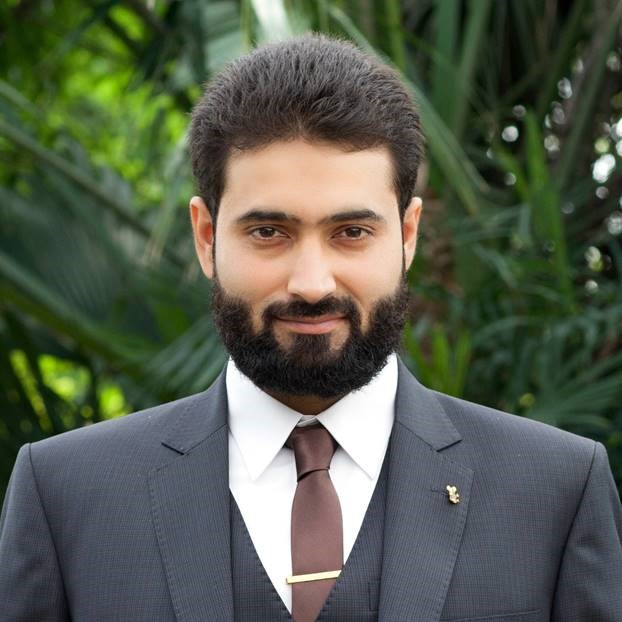Is there a safe spot? modeling seismic amplification with spectral element method and dem based topography
Saad Khan is PhD student in the department of Earth Systems Analysis. His supervisor is Mark van der Meijde from the Faculty of Geo-Information Science and Earth Observation.

The earth’s topography reflects seismic energy which can lead to scattering or focusing of seismic waves, and thereby amplifies or de-amplifies the seismic response. Estimation of such site effects on ground shaking is often done using 1D or 2D numerical codes. These studies are usually limited to small spatial area (single basin or ridge). However, because of the large extent of a seismically active area, with at least the same area affected by an earthquake, regional evaluation of site effects on seismic response is required that is also applicable at local scale. Existing regional studies on seismic induced ground shaking and expected damage (like USGS-ShakeMap and PAGER in near-real time for effective response activities) are derived at coarse resolutions of around 1 km2, hence giving much generalization in results. Furthermore, quite a few of these approaches adopt proxies for estimating the seismic effect instead of applying realistic wave propagation models.
This study aims to cover the gap between these two extremes of scale and investigate impact of topography on a regional scale using the spectral element method (SEM) technique; thereby adopting a realistic full-elastic waveform modeling approach. SEM is a technique that can be used for simulating 3D seismic wave propagation to estimate ground shaking. It incorporates a 3D physical model, with a particular focus on the simulation of the interaction of seismic waves with a free-surface topography through a full elastic waveform simulation including all possible waves, based on realistic source characteristics of an earthquake. The Digital Elevation Model (DEM) and spectral element mesh resolutions play an important role in influencing estimation of ground shaking when performing SEM simulation. DEM resolution influences the accuracy and detail with which the Earth’s surface can be represented and hence affects seismic simulation studies. Apart from the spatial resolution of a DEM, the mesh resolution, adopted in the creation of a 3D spectral element meshing, also changes the details of surface topography. Furthermore, with the use of high resolution data, the computation cost increases and may not be processed without supercomputing. Therefore, we evaluate how low the resolution of DEM and mesh can become before the results are significantly affected. We simulated models with different combinations of DEM and mesh resolutions. The peak ground displacement obtained from these simulations was compared with the peak ground displacement of the model having the finest mesh and DEM resolution. Our results show that any mesh or DEM resolution of 540 meters or coarser would give unrealistic results.
The 2005 Kashmir earthquake was one of the most devastating natural disaster in northern Pakistan, resulting in heavy loss of life and infrastructure. Muzaffarabad city (Kashmir region, north Pakistan) and its surrounding areas were severely affected. Previous studies showed manifestations of topographic effects on seismic amplification and infra- structural damage. This study investigates the influence of topography on seismic amplification during the 2005 Kashmir earthquake. The 2005 Kashmir earthquake is simulated in 3D with SEM in the area of Muzaffarabad and adjacent areas. The study shows that the ridges in the area experience an amplified seismic response while the valley shows overall a de-amplified seismic response. There is a clear relation between seismic amplification and the occurrence of landslides. Slopes facing away from the source receive an amplified seismic response resulting in an increased landslide occurrence rate than slopes facing away from the earthquake source. Furthermore, 98 % of the highly damaged areas are located in the topographically amplified seismic response zone.
Major efforts are being put into minimizing the impact of earth- quakes since the prediction of the exact time and location of an earth- quake is still not possible. The SEM modelling is applied in a kind of probabilistic approach to map the potential hazard due to earthquakes, including the topographic effect. The area of focus is also here on the Kashmir region, which lies on a converging plate boundary between the Indian and Eurasian plate. Predictions are that this region is prone to future large earthquakes because of the continuous buildup of tension on these boundaries. We simulate 25 scenario earthquakes on main faults in the region based on earthquake characteristics of the 2005 Kashmir earthquake. We estimate the expected ground shaking, including topographic amplification effects from potential future earthquakes in the region. These 25 scenarios are used to build a seismic hazard map for the study area that can be used by concerned organization for disaster management practices.





